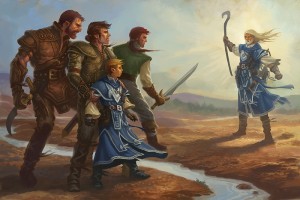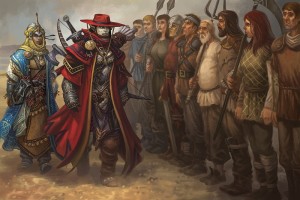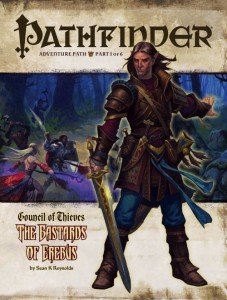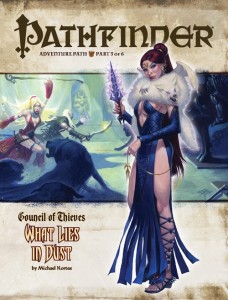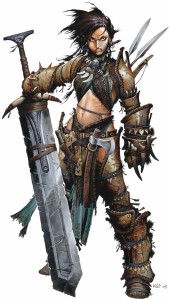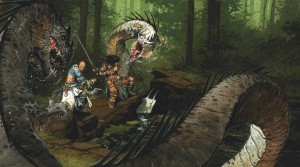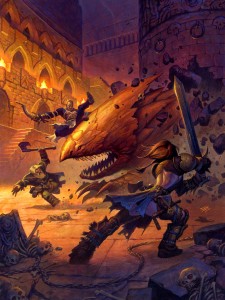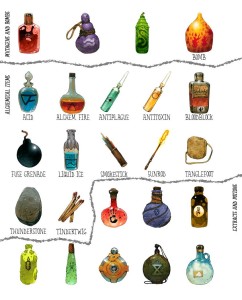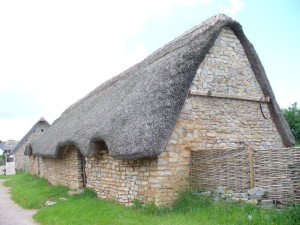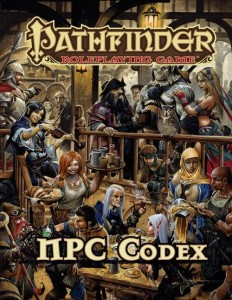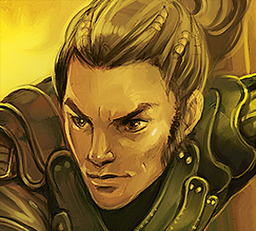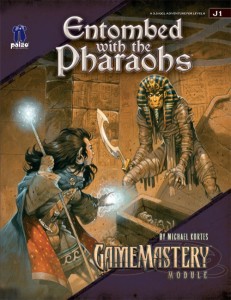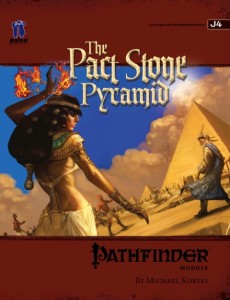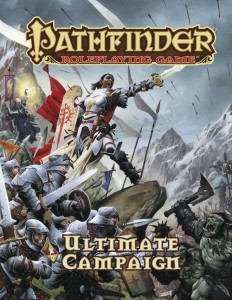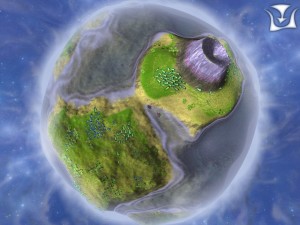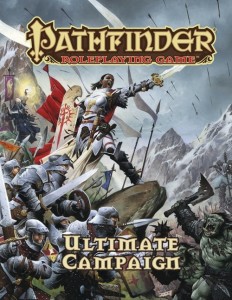 Thank you all for following me through the review of this mighty new addition to the core Pathfinder books by Paizo. It has been quite the journey. There have been tears, laughter, pain, sorrow, joy but it is now coming to a close with a review of the final chapter, Chapter 4 Kingdoms and War.
Thank you all for following me through the review of this mighty new addition to the core Pathfinder books by Paizo. It has been quite the journey. There have been tears, laughter, pain, sorrow, joy but it is now coming to a close with a review of the final chapter, Chapter 4 Kingdoms and War.
This chapter is paradoxically the smallest chapter in page size (around 50 pages) but dominates the table of contents at the start of the book. The Table of contents is a two column affair on one page and this chapter takes up practically all of the second column. Noting this I actually thought it was going to be a piecemeal affair that would irritate me to a large degree so with a cautious eye I moved into the Chapter and began to read.
Just before I give you any detail about the chapter I am going to have to warn you about something. I am declaring that I don’t really like the idea of a campaign that centers around kingdom building. It takes a certain type of GM and player to want to play this style of game. I see it too much as an administrative affair with a lot of extra work involved. I also see that in reality an adventurer would not be able to rule a kingdom unless it were a tribe of nomads or the like. Ruling a kingdom comes with responsibility and Kings and Queens do not get to simply wander off when they want. With that off my chest let us move back to some detail of the actual book.
Kingdoms
The chapter starts with a focus on building a kingdom from scratch but is unusually organized. You read an introduction about how they want to approach the chapter and then they suggest if this is the first time that you have read the chapter, go forward and read a section on building a settlement before going back and reading from that point onward. I found this extremely weird. I did as they suggested and the chapter certainly flowed correctly by doing this but the question has to be asked. Why? Why not just put the section on Settlements at that point in the chapter. There is no major problem it causes on the second read through and I would prefer to read it in that order all the time. This is just a complete oddity of the whole book and the question distracted me from a lot of detail.
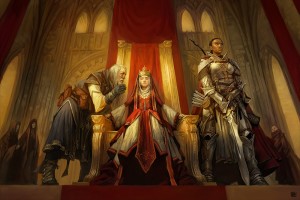 The kingdom building rules borrow a lot of ideas from Chapter 3 and Chapter 2 to build sort of a mini game that is Kingdoms. You follow a set Kingdom turn that is broken up into four phases representing a month of game time: upkeep, edict, income, and event. The upkeep is where you balance the kingdom’s resources; edicts allow you to declare actions for the coming month that could be good or bad; income is where you get to fill the treasury up again; and event is out of your control and covers events that you may have to deal with directly.
The kingdom building rules borrow a lot of ideas from Chapter 3 and Chapter 2 to build sort of a mini game that is Kingdoms. You follow a set Kingdom turn that is broken up into four phases representing a month of game time: upkeep, edict, income, and event. The upkeep is where you balance the kingdom’s resources; edicts allow you to declare actions for the coming month that could be good or bad; income is where you get to fill the treasury up again; and event is out of your control and covers events that you may have to deal with directly.
You get to build the kingdom up from scratch if you follow the default manner and you build your kingdom up in hexes as opposed to squares on a map grid. This follows the way the exploration is handled in the third chapter and I am wondering if these decisions have been influenced by the development of the Pathfinder MMO by Goblinworks. The blogs detailing the making of the Pathfinder MMO from last year are beginning to look eerily similar to the way they treat building a kingdom in here. The question is did the development of this book affect the computer game or did what the computer gamers want to do influence the book? Does it even matter?
The rest of kingdom building is similar to building a structure that is covered in chapter 2 and you have a bunch of buildings etc. that you can build up in settlements or expand your territory and the like. There are a lot of detailed rules (and then an optional rules section) that add a great deal of complexity to the system that kind of made me wish I was sleeping rather than reading a bunch more rules for an already rules heavy setting. But, and there is a but, I got through it and have to say I did not hate the section. In fact I thought it was quite novel and that it would probably be very valuable to the accountants of this world who like to role play as well. Here they can build their own kingdoms and exert control over vassals whilst balancing resources. All in all it is well contained and offers a good level of detail to this style of play. Don’t get me wrong, it is a section of the book I will likely never look at again but it is worth looking at if that is what you like.
Mass Battles
The next section was on war or mass battles in Pathfinder. I was actually quite keen to see what they had done with this as I have run mass battles in the game before but I had scripted them rather than used any type of mechanic. That said I have seen plenty of systems try to approach this subject and fail horribly by making systems that just fail completely to be intuitive and easy to use.
Paizo have come through with the goods on this system though. I started to read it and thought that it would be good if they did it just by providing something similar to the current combat system with a little less complexity (an army can’t grapple another army!) and that is exactly what they have provided. The system is intuitive as it uses concepts that are similar to the current roll 1d20 + a bonus with a target number of an AC system that currently exists.
They have added a nice usable morale system and given a good description of what this means to the unit. In fact this system is quite good that I may be using that in the one on one combats at times when I think creatures might make a run for it. Things like the commander can affect these rolls or give additional benefits. The commander gives certain boons to their army and will know certain tactics based on their level in Profession(Soldier) which I thought was also a great way of giving value to skills that players do not often take.
Finally, they cover loads of special abilities that the army made be able to use (what if you have a unit of regenerating trolls etc) and it just works. They teach you how to create a unit based on existing skill levels and then also give you a horde of army units that was a really good addition I had not overly expected. I have to say that the mass battles section of this chapter gets two big thumbs up from me and it will be something I refer to again!
The Book Overall
Now I have the content covered I want to say a few more things about this book. First and foremost it is very well presented, but I am pretty sure I don’t need to mention that. Paizo always make their books look remarkable with great artwork and layout. One thing that was a nice addition for this book was that they added a lot of forms for you to use with their system. If you look over the last month of posts you will find how I mention there is a lot more bookwork to be maintained with a lot of this material and they have done their best to give you the tools that you need to use.
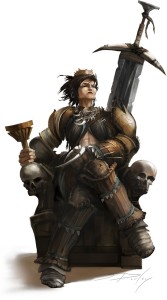 Is this book the killer I thought it would be? Well, that is hard to answer as it is not the book I thought it would be. It is a book that helps with building a campaign but it is also a book that does not tell you how to build a campaign. It gives you a lot of systems that can assist you with looking at a lot of different things that some of your players might like to do. With the exception of the first chapter which is something I would like us all to adapt as GM’s (getting our players to get into background that is) the rest of the systems will work for some and not others so you need to pick and choose as you go.
Is this book the killer I thought it would be? Well, that is hard to answer as it is not the book I thought it would be. It is a book that helps with building a campaign but it is also a book that does not tell you how to build a campaign. It gives you a lot of systems that can assist you with looking at a lot of different things that some of your players might like to do. With the exception of the first chapter which is something I would like us all to adapt as GM’s (getting our players to get into background that is) the rest of the systems will work for some and not others so you need to pick and choose as you go.
I will say that this book has surprised me though. There are a lot of rules in here for you to read and go over. It is a long read too although it is only set at 250 pages or so the material can get a bit dry so you have to put away all the distractions to read some sections. But I am totally glad I did. This is an exceptional valuable sourcebook to me and will see a lot of use as I continue to pursue my craft as a GM. Some sections will never be used again but on a whole that is OK. You cannot please all of the people all of the time and we all have different focuses in game which is what this book represents.
So, to an overall score, considering everything I have read and fully understanding what this book is about. With its minor flaws and overall view I can’t give this book any less than five out of five castles overall. This is a great book to have in your collection. Save up your pennies and get yourself a copy!
One final footnote, just as I exit the long winded review mode I got an email telling me that my copy of Mythic Adventures is on its way to me. It is the next sourcebook for the core rules and is something that I have been long looking forward to! So there are likely to be more reviews in the near future! But until then, keep rolling!
Mark Knights is 39 year old guy living in a small rural town called Elliott in Tasmania, Australia. I have been role playing since I was 11 years old playing the original versions of Dungeons and Dragons, MERP, Elric, Dragon Warriors and the like amongst other genre games. I played D&D 2nd Edition through the 90′s but I ran Earthdawn for my fantasy setting and loved it as a GM. When 3rd Edition came out for D&D I tried it but found it too heavy on rules. I ignored the 3.5 edition of DnD in favour of Earthdawn (big mistake) as I thought it was just a money spinner. When 4th Edition DnD came on my players and I gave it a red hot go but hated what it had dumbed the game down to be. On a trip to Melbourne to buy some 4E stuff from a hobby store an old mate of mine pointed me at Pathfinder and in a Fantasy setting I have never looked back.

